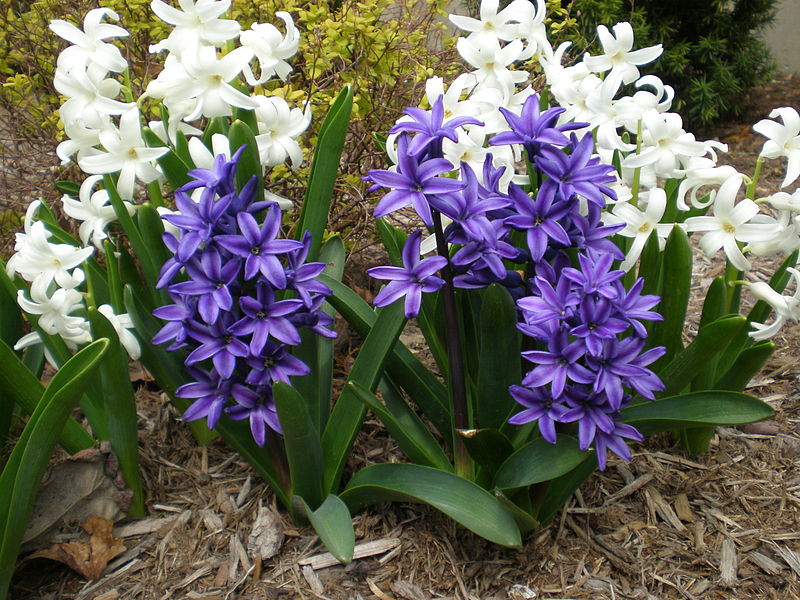
Hyacinth and bluebells are traditionally associated with love and fidelity, telling the truth — and rabbits!
“Saint Hyacinth!” Who’d athunk it?!
Last year, a reader of Romanian background remarked that a post about St. Valentine and love magic made no reference to Eastern European legends or practice. She asked, “Who is the Orthodox version of St. Valentine?” I decided to look into that question and discovered that St. Hyacinth is the Eastern European answer to St. Valentine!
It seems that there are several men named Hyacinth in the Orthodox calendar of saints. The one most consistently associated with love, like Valentine, was a martyr who was put to death for his faith with his brother Protus during the reign of the emperor Trajan (AD 257-9). They were baptized as adults, spent time living with the hermits in Egypt, were beheaded for their faith, and buried together in one tomb. Their brotherly devotion to each other is one source of their association with matchmaking and love.
But that’s not the end of the story. Hyacinth and Protus are said to have been “brothers,” a frequent euphemism for male partners. Such male partnerships first developed among monks as a way to support their mutual prayer, Bible study, and ascetic effort. Among laymen, this “brotherhood” might or might not have included a sexual aspect. (I highly recommend Claudia Rapp’s excellent study of brother-making if you are interested in learning more about this.)
But that is still not all of the story. St. Hyacinth is also associated with love and devotion because the original Hyacinth, a male character from Greek mythology, was a beautiful young mortal man who was beloved by both Apollo (the sun god) and Zephyrus (the god of the west wind). According to the myth, Zephyrus became jealous of Apollo and angry at sharing the attentions of Hyacinth — Hyacinth was evidently more fond of Apollo. So one day as the three were throwing a discus (not unlike three friends tossing a Frisbee), Zephyrus caused the wind to blow the discus into Hyacinth’s head. Hyacinth died of the gash to his head and the first bluebells (also called “hyacinth”) bloomed where his blood spattered the ground. The small blossoms of the flowers are marked by dark spots that resemble the Greek letters AI, which spell the word “Alas!” in Greek.
Hyacinths and bluebells are said to prevent someone from telling a lie just as Hyacinth was honest about his feelings for Apollo. The flowers are also used to promote love and fidelity. They were used in folk medicine but the bulbs contain toxic drugs and are not usually used any more. They are sometimes called “harebells” because rabbits are frequently seen where the flowers bloom and are said by some to be used by witches as they transform into were-rabbits.
There is a wonderful series about bluebell and hyacinth folklore here.
And what about Eastern European love magic? I found a great article about contemporary folk magic in an area where Serbia and Romania meet.
